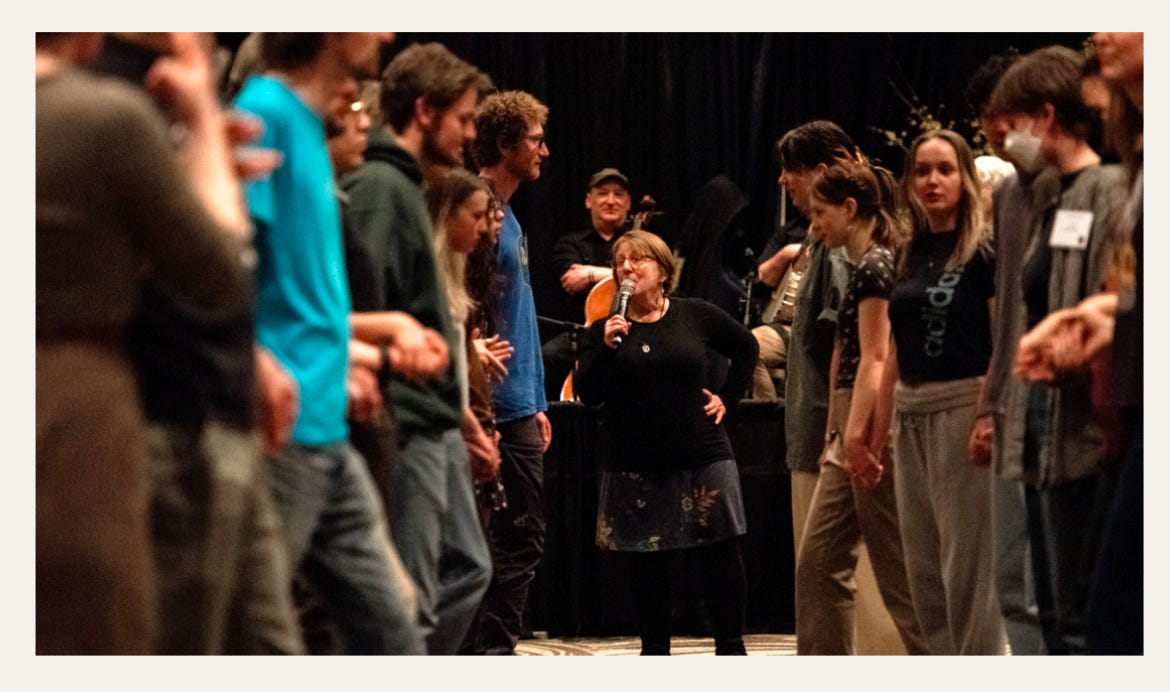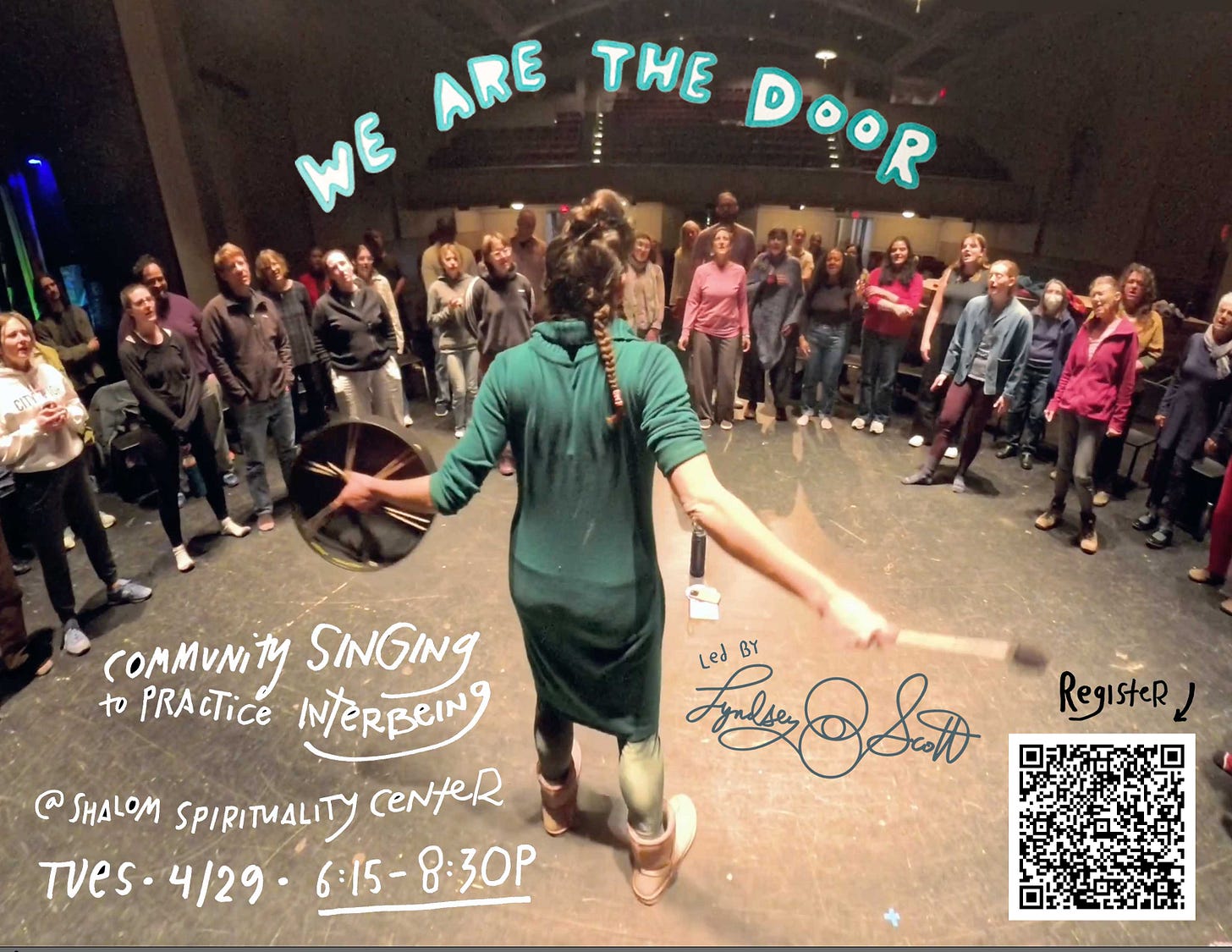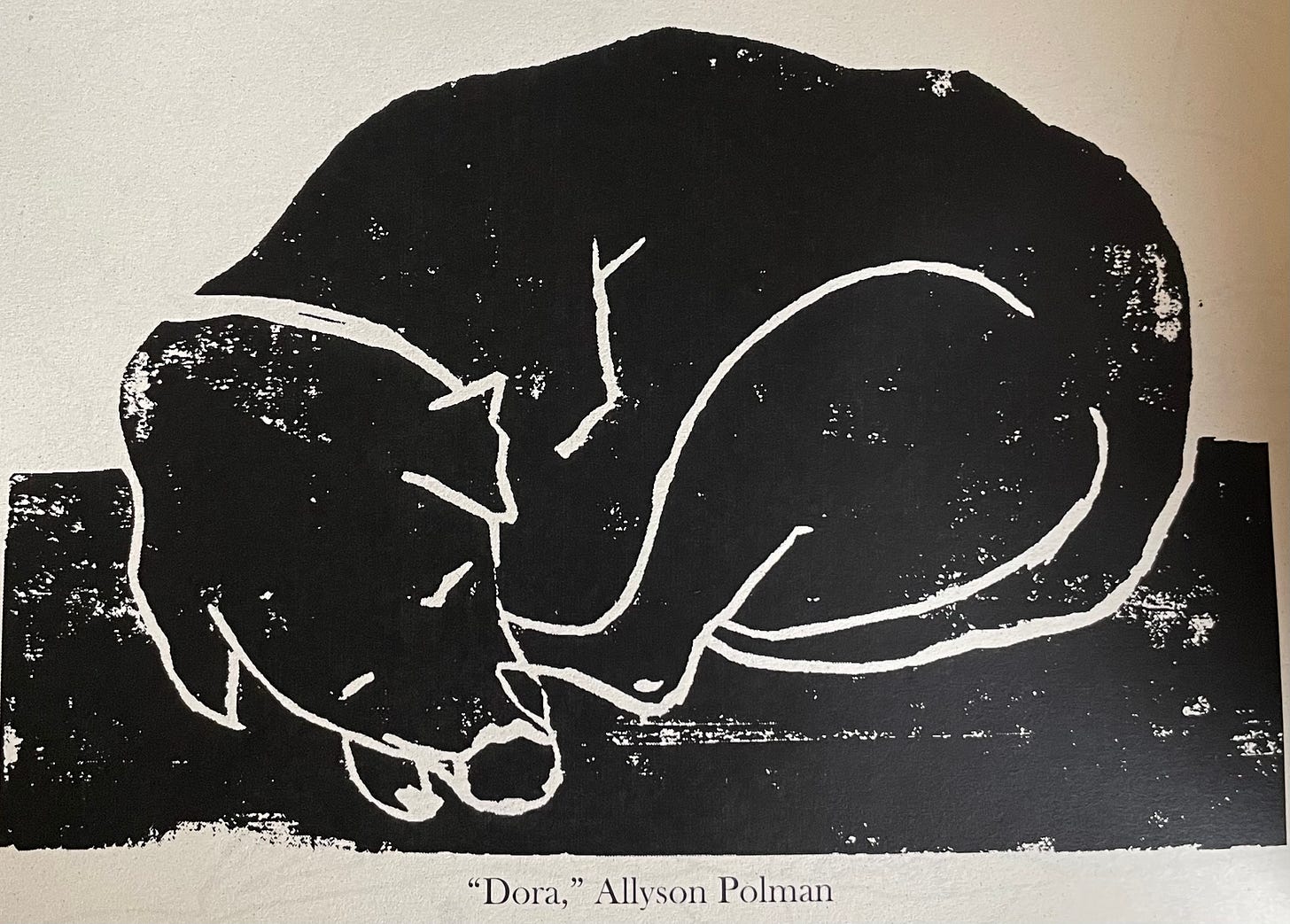Join Us & Be Joyous!
Inside: Last Chance Barn Dance this Fri, Thank you to Sue, Lyndsey Scott Song Circle next week, May Day Celebration, & Zine Article appropriate for today
Last dance in the Dickeyville Movement Through Dance Series is this Friday! Be there and be square… dancing! Hope you can make it!
Thank You Sue!
For the last year I have had the honor and privilege of apprenticing with folk dance leader/caller extraordinaire, Sue Hulsether, through a WI Folk Arts apprenticeship grant. The grant offers people like me who are interested in learning more about a specific folk art form the amazing opportunity to work with an elder mentor for a year. When I met Sue 10 years ago at a home school folk dance event I asked her afterwards, “how do I become you?” because I found her music leadership so enchanting. Now slowly with Sue’s incredible guidance and shared wisdom I’m growing in my folk dance leadership in new and exciting ways. She recently was interviewed and featured by WPR’s WI life program. Read and/or listen to the well-done featured story here. Dancing Sue
Thank you Sue for being such a kindred spirit and for sharing so freely all of your gifts, resources and wisdom (that reached far beyond dance calling into spirituality, gardening, and beyond!) I’m so grateful!
Reserve your spot for the Lyndsey Scott Song Circle
Fuel your resilience and open your heart during this interactive evening of Song, reflection, and connection. Tues. April 29th 6:15-8:30 @ Shalom Retreat Center in DBQ
Read more about it and Reserve your spot here! Lyndsey Scott
May Day Celebration
Join the Driftless Wild Church community- Thursday, May 1 @ 5:30 at Little Platte CW Farm (1860 Stumptown Rd. Platteville, WI) for a May Day Celebration (with May Pole dancing!) and potluck to follow.
On this Easter Monday & the day of Pope Francis’ death I’d like to share with you this recent article I wrote for our farm newsletter.
Hold to the Constant, Hold to the Cycle
by Mary Kay McDermott
All things rise and flourish
Then go back to their roots.
Seeing this return brings true rest,
Where you discover who you really are.
Knowing who you are, you will find the constant.
-Lao Tzu
Amid my grief upon the death of our beloved farm dog, Dora, I also felt awash with gratitude upon realizing how well my family knows one of the corporal works of mercy–how to bury the dead. The procession, the blessings with words and holy water, the digging of soil, the singing of songs, the sharing of memories, and the shedding of tears as Dora took her last breaths came so naturally to us that we were able to allow these rituals to hold us even as we experienced such deep sadness. Surprisingly to me, the children—eight and twelve at the time—didn’t shy away from any part of the process. Instead, they were intimately and courageously involved in every step of the homemade ceremony. They joined Peter and me in bearing witness as Dora’s earthly elements of wind, water, and fire left her. Together, we carried Dora to her final resting place and covered her with the earth from which she came. Ashes to ashes, dust to dust.
While it is my motherly instinct to shield my children from such difficult moments, to protect them from the hard times and the traumatic images that might last, it also feels increasingly important to me to expose my children - and to engage myself - in these cycles of life, death, and resurrection. Rather than a spectacular one-time “Jesus event” that we commemorate yearly in the Easter Triduum, these cycles continually unfold before our eyes if we are open to seeing them. On the farm, we are gratefully (though sometimes also regretfully) enmeshed daily in these cycles in ways both big and small: tending flowers that bud, flourish, and fade; witnessing burned land resurrect dormant native seeds; turning decaying organic matter into dark, rich compost; and then planting into this compost tiny seeds that mature into a lush food paradise that, after fading, once again returns to the earth.
A few months after Dora’s death, we celebrated the birth of a newborn baby calf, only to awaken the next morning to find him grieving next to his mother, Flora, our loyal dairy cow, who had died in the night. Anyone who has lived on a farm knows well that proximity to life always means proximity to death. The Paschal Mystery of life, death, and resurrection is ever and always present here. And sometimes, as was the case on that day, it means intimately carrying the weight of both life and death in the exact same moment.
Thankfully, as Christians, we believe that death never has the final say, as resurrection is an integral part of the cycle. Witnessing these cycles of dying and rising over and over again in our daily lives builds hope that new life will always come with death or dark times.
Despite this trust, however, these losses close to home and upheaval in our cultural and political realms can at times still leave me feeling hopeless and praying about how to stay grounded in the midst of such turbulence. Recently, through my prayers, the message I kept hearing was, “Hold to the constant.”
Responding to this message, I began to reflect on those elements in my life I consider to be constant, to better understand what I was being asked to “hold to.”
Not surprisingly, I discovered that many of the things that I view as most constant in my life are not stationary, but are cyclical in nature: the Sunrise and Sunset; the Liturgical calendar; the phases of the Moon; Women’s Menstrual cycles (which circulate through life, death, and resurrection every month!); the Seasons of Winter, Spring, Summer, and Fall; Perennials that bud, flower, and fade; the Cottonwood tree outside my window; even the pesky flies and boxelder bugs—all of these things go through their own cycles of life, death and resurrection. All, in their own way, embody the Paschal Mystery.
It grounds me to know that the same cycles of life, death, and rebirth that are manifested by the world around me—from the plants and trees just outside my window to the sun and moon in the heavens—are a part of my own being as well. It is comforting to realize that it is good and natural in my life, as it is in the rest of creation, to experience both seasons full of life and energy and seasons of hibernation and rest. We are circular beings living in a circular universe. Rather than be made anxious or unmoored by times of death, I can remain grounded in the knowledge that such decay always creates fertile ground for new life.
I want to continue leaning into the cycles of life that surround me, which I am beginning to realize are the undercurrent of all that we do and all that we are. And I want to continue to accompany my children as they, too, allow these cycles to inform and nourish them during even the most tumultuous times. Because though it may seem paradoxical: by excluding death from our life we can’t live a full life, and by admitting death into our lives we enlarge and enrich our lives.
I appreciate how author Stephanie Duncan Smith writes about the importance of leaning into the cyclical rhythms of creation in her book, Even After Everything: “The cycle of the seasons, of both the earth and the sacred year, shows us that there is no clean, straight line. There is only the slow-gathered accumulation of wisdom through the circle… Authentic resilience is cultivated through braving the bend again and again, deepening with each new orbit.”
So friends, at this moment, when a lot of us are riding the waves of these turbulent times, I ask you to join me in attempting to hold to the constant. What are the elements that are constant in your life? Do they hold within them the sustaining undercurrents of life, death, and resurrection? And can you lean on them as a way of finding steadiness to help sustain you through the turbulence of this holy and mortal life? If so, then may we “brave the bend” together again and again.









